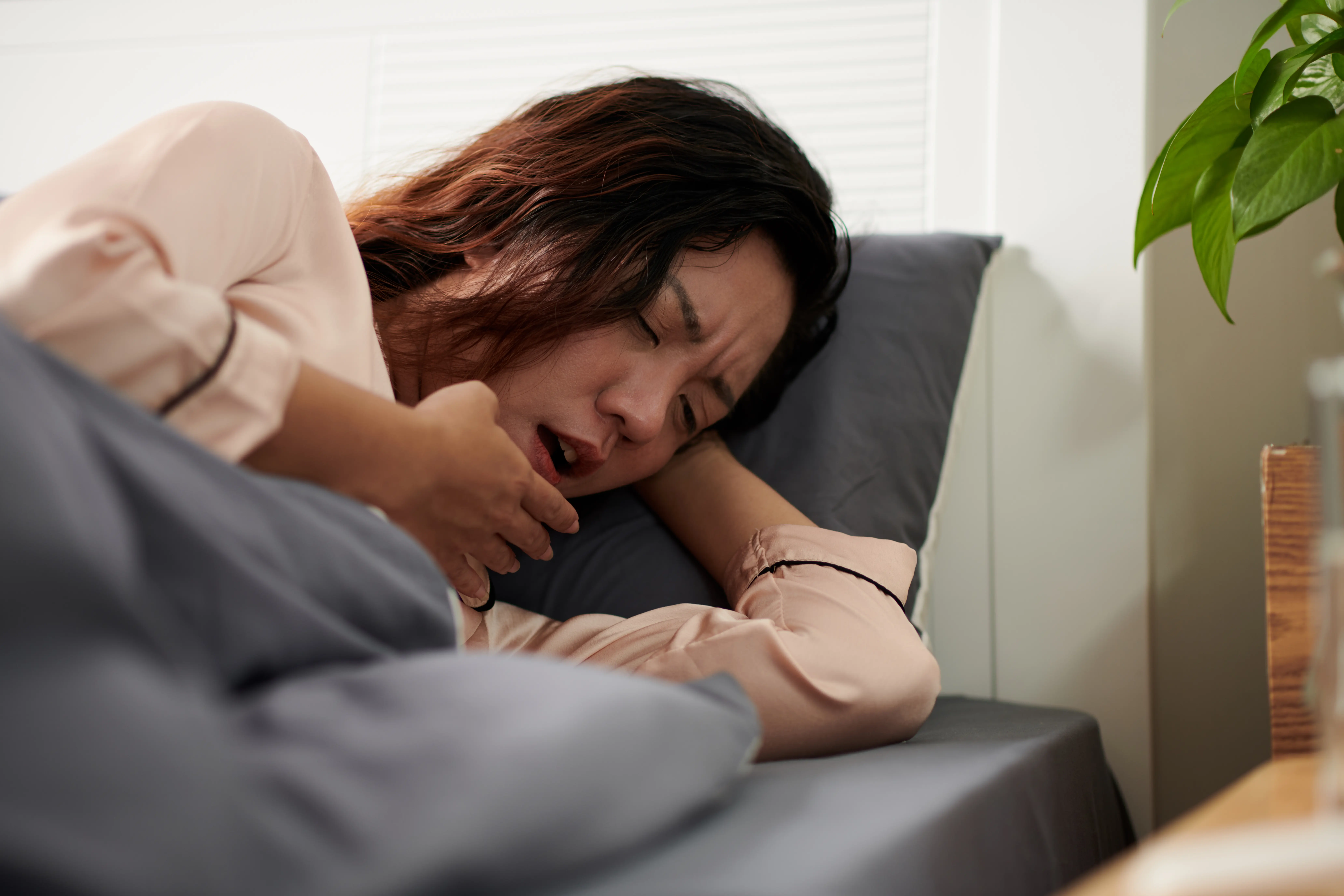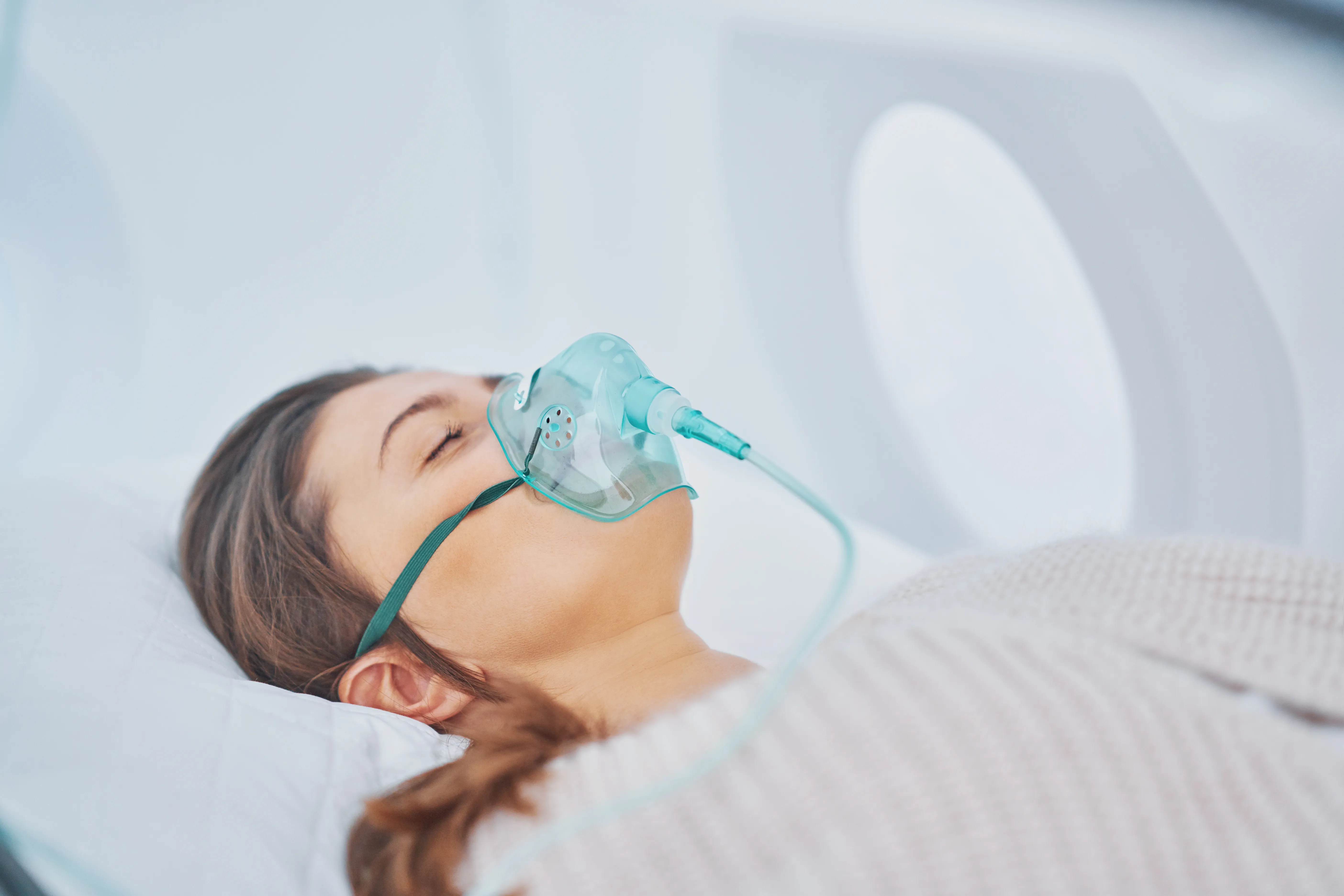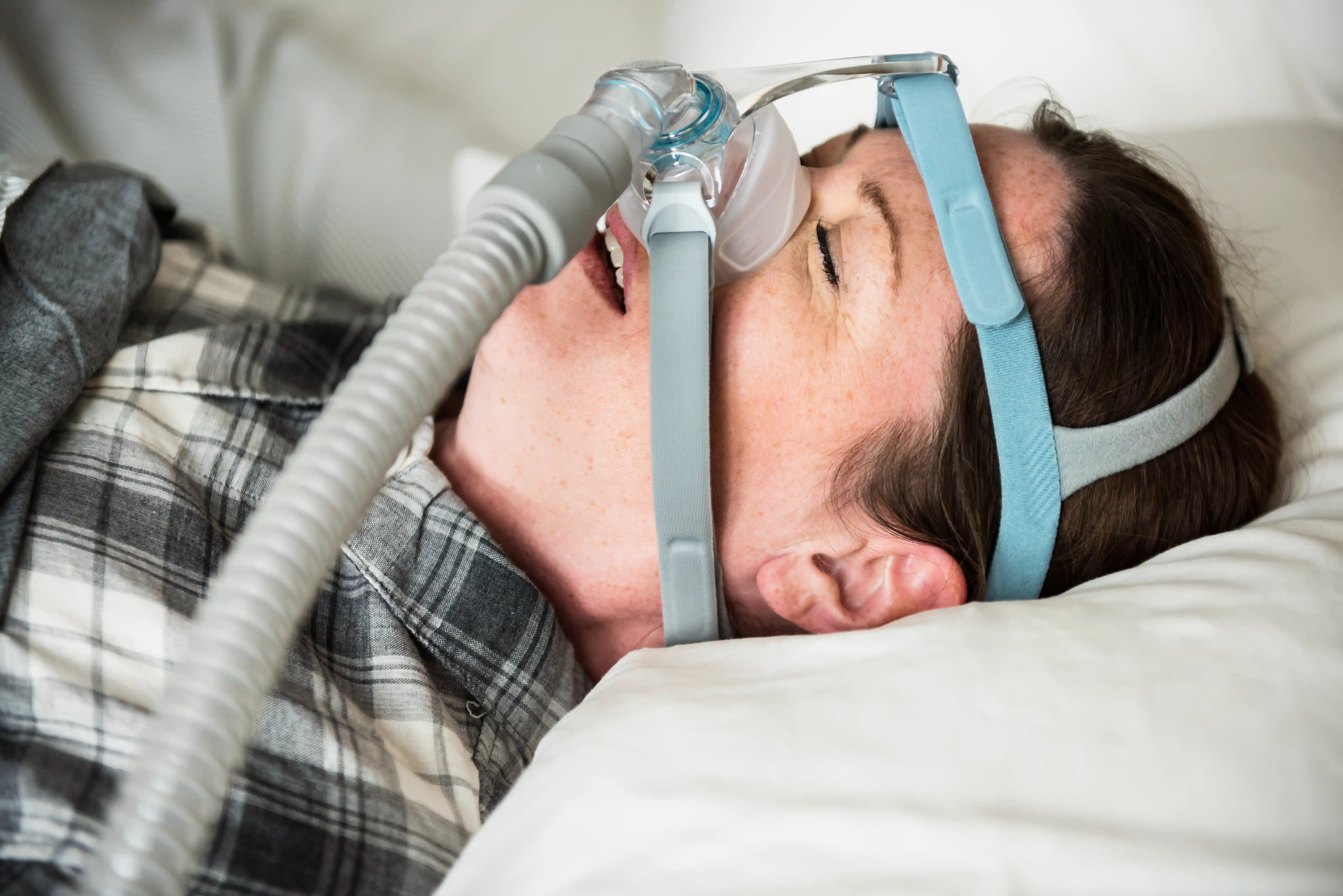Sleep apnea is a common but often overlooked sleep disorder that affects millions of people worldwide. It’s characterized by repeated interruptions in breathing during sleep, which can severely impact rest quality and overall health. There are several types of sleep apnea, with the most prevalent being obstructive sleep apnea (OSA).
OSA is a common yet often undiagnosed sleep disorder that affects millions of people worldwide. It disrupts breathing repeatedly during sleep, leading to poor rest and a range of potential health issues.
In this article, we’ll take a closer look at OSA, what causes it, how it affects the body, and what treatment options are available.
What Is Obstructive Sleep Apnea?
Obstructive sleep apnea occurs when the muscles at the back of the throat relax too much during sleep, causing the airway to narrow or close. This blockage interrupts breathing, sometimes for several seconds or longer, and can happen dozens to hundreds of times per night.
When breathing stops, the brain briefly wakes the body to reopen the airway, usually so briefly that the person doesn't remember it. These disruptions reduce sleep quality and can lead to serious health problems over time, including cardiovascular issues, mood disorders, and cognitive impairment.
Causes and Risk Factors
Obstructive sleep apnea often results from a combination of structural, lifestyle, and medical factors that make the airway more likely to collapse during sleep. Here’s a closer look at the most common contributors to OSA.
- Relaxation of Throat Muscles: The core cause of OSA is the excessive relaxation of the throat muscles during sleep. These muscles support the soft palate, uvula, tonsils, tongue, and the walls of the throat. When they relax too much, the airway becomes narrow or collapses completely, leading to breathing pauses that repeatedly disturb sleep throughout the night.
- Obesity and Excess Weight: Excess body fat, especially around the neck, can increase the pressure on the airway and make it more likely to collapse during sleep. Obesity is one of the most significant risk factors for OSA, and even a moderate amount of weight gain can worsen symptoms. Fat deposits in the upper airway and reduced muscle tone can both contribute to more frequent breathing interruptions.
- Anatomical Factors (Enlarged Tonsils, Large Tongue): Some individuals have physical traits that naturally narrow their airways, such as enlarged tonsils, a large tongue, or a receding jaw. These anatomical features can restrict airflow during sleep, increasing the risk of obstruction, especially when lying on the back or during deeper stages of sleep like REM.
- Age and Gender Influences: OSA becomes more common with age, particularly in adults over 40. Men are also more likely to develop the condition than women, although the risk for women increases after menopause. Hormonal differences, fat distribution, and structural differences in the airway may all contribute to these patterns.
- Smoking and Alcohol Use: Smoking irritates the airway and increases inflammation, which can make the airway more prone to collapse. Alcohol relaxes the muscles of the throat and reduces the brain’s ability to respond to breathing interruptions, both of which can significantly worsen sleep apnea symptoms.
- Family History: A genetic predisposition may increase your risk of developing OSA. If close family members have been diagnosed with the condition, your chances are higher, especially if you also share similar physical traits like a narrow throat, small jaw, or enlarged tonsils.
- Endocrine Disorders: Certain hormonal and metabolic conditions, such as hypothyroidism, polycystic ovary syndrome (PCOS), and acromegaly, can increase the risk of OSA. These disorders can lead to weight gain, soft tissue swelling, or structural changes in the airway, making breathing interruptions more likely during sleep.
Common Symptoms of Obstructive Sleep Apnea

Obstructive sleep apnea often goes undiagnosed because many of its symptoms occur during sleep, but its impact carries into daily life. Recognizing the signs can be the first step toward getting a proper diagnosis and improving your overall well-being. Here’s a breakdown of the most common symptoms associated with OSA.
- Loud, Persistent Snoring: One of the most noticeable signs of OSA is loud and chronic snoring, often reported by a bed partner. This snoring results from air trying to pass through a partially blocked airway and is usually louder during certain sleep positions or phases, like REM sleep.
- Breathing Pauses or Gasping During Sleep: People with OSA often stop breathing for short periods, followed by gasping, choking, or snorting as the body reacts to reopen the airway. These episodes are usually brief and may go unnoticed by the sleeper, but can be alarming to someone watching.
- Restless Sleep: Frequent interruptions in breathing can prevent the body from settling into deep, restorative sleep stages. As a result, people with OSA may toss and turn throughout the night or wake up frequently without realizing why.
- Excessive Daytime Sleepiness: Despite spending enough hours in bed, people with OSA often feel excessively tired during the day due to poor sleep quality. This can lead to difficulty staying awake during routine activities, such as working, reading, or even driving.
- Morning Headaches: Waking up with headaches is common in individuals with OSA, often due to reduced oxygen levels or disrupted sleep cycles during the night. These headaches usually improve as the day progresses.
- Mood Changes and Difficulty Concentrating: Sleep deprivation from OSA can lead to irritability, mood swings, depression, and problems with memory or focus. Over time, these cognitive and emotional effects can significantly affect a person’s quality of life and productivity.
How Is Obstructive Sleep Apnea Diagnosed?
Because many of its symptoms occur during sleep, obstructive sleep apnea can be difficult to recognize without proper testing.
Diagnosis usually involves a combination of evaluating medical history, performing a physical exam, and conducting specialized sleep studies. Here’s how healthcare providers typically identify OSA.
Sleep Studies (Polysomnography)
An overnight sleep study, known as polysomnography, is considered the gold standard for diagnosing obstructive sleep apnea.
This test is conducted in a sleep lab and monitors various functions during sleep, including brain activity, heart rate, breathing patterns, blood oxygen levels, and limb movements. It helps determine the presence and severity of apnea events and can also detect other sleep disorders.
Home Sleep Apnea Tests
For individuals who are unable to visit a sleep lab, doctors may recommend a home sleep apnea test. This portable test is less comprehensive than in-lab polysomnography but still tracks key metrics like airflow, breathing effort, and oxygen saturation. It’s a convenient and cost-effective option for diagnosing moderate to severe OSA in many cases.
Medical History And Physical Examination
Before recommending a sleep study, a healthcare provider will typically review your symptoms, medical history, and lifestyle habits. They may ask about snoring, daytime fatigue, and any observed breathing issues during sleep.
A physical exam might include checking for anatomical features that contribute to OSA, such as a large neck circumference, a narrow airway, or enlarged tonsils.
Health Risks and Complications
When left untreated, obstructive sleep apnea doesn’t just affect sleep quality; it can lead to serious, long-term health issues. Repeated oxygen deprivation and sleep fragmentation place stress on multiple systems in the body. Here’s a look at the major complications associated with OSA.
- High Blood Pressure: The constant drops in oxygen levels during apneic events cause the body to react with spikes in blood pressure. Over time, this can contribute to chronic hypertension and increase strain on the cardiovascular system.
- Heart Disease and Stroke: OSA is linked to a higher risk of heart-related issues, including heart attacks, irregular heartbeats (arrhythmias), and stroke. The stress caused by interrupted breathing can lead to inflammation and damage to the blood vessels.
- Diabetes: Sleep apnea may interfere with the body’s ability to regulate blood sugar levels, increasing insulin resistance. This makes individuals with OSA more likely to develop type 2 diabetes or experience worsened control of existing diabetes.
- Daytime Fatigue And Accident Risk: Excessive daytime sleepiness can severely impact daily functioning, increasing the risk of work-related mistakes, poor academic or job performance, and dangerous situations like drowsy driving or industrial accidents.
- Mental Health Impacts: Chronic sleep disruption can affect emotional regulation, leading to mood disorders such as depression and anxiety. People with OSA may also struggle with memory, attention, and decision-making due to reduced cognitive functioning.
Treatment Options for Obstructive Sleep Apnea
Managing OSA often involves a combination of lifestyle changes, medical devices, and in some cases, surgery. The best treatment plan depends on the severity of the condition and the individual’s specific anatomy and health profile. Here are the main options.
Lifestyle Changes

Adopting healthier habits can significantly improve OSA symptoms, especially in mild to moderate cases.
- Weight Loss: Losing excess weight can reduce pressure on the airway and improve airflow during sleep. Even a modest reduction in body weight can lead to noticeable improvements in breathing.
- Avoiding Alcohol and Sedatives: These substances relax the muscles in the throat and suppress the brain’s response to oxygen drops, which can make apnea episodes worse. Avoiding them, especially close to bedtime, can help keep the airway more stable.
- Sleep Position Modification: Sleeping on the back makes it easier for the tongue and soft palate to block the airway. Many people experience fewer symptoms when sleeping on their side or using specialized pillows or positioners.
Medical Devices and Therapies

These non-surgical interventions are often the first line of treatment for moderate to severe OSA.
- Continuous Positive Airway Pressure (CPAP): CPAP is the most commonly prescribed therapy. It uses a machine that delivers a steady stream of air through a mask, keeping the airway open throughout the night and preventing breathing pauses.
- Oral Appliances: Custom-fitted dental devices can reposition the jaw or tongue to help keep the airway open. They’re a good alternative for people with mild OSA or those who can’t tolerate CPAP.
- Other Breathing Devices: In some cases, alternative machines like BiPAP (bilevel positive airway pressure) or ASV (adaptive servo-ventilation) may be used for individuals who struggle with standard CPAP or have complex sleep apnea.
Surgical Interventions
Surgery may be considered when other treatments are ineffective or when structural abnormalities are contributing to airway obstruction.
- Tonsillectomy or Adenoidectomy: Enlarged tonsils or adenoids, especially in children, can block the airway. Removing them can significantly reduce or eliminate OSA in some cases.
- Uvulopalatopharyngoplasty (UPPP): UPPP removes excess tissue from the throat, including part of the soft palate and uvula, to widen the airway and reduce collapse during sleep.
- Inspire Therapy: Inspire is an implanted device that stimulates the airway muscles to keep them open during sleep. It’s typically used in adults with moderate to severe OSA who can’t tolerate CPAP.
- Other Airway Surgeries: Depending on the patient’s anatomy, additional procedures like jaw repositioning (maxillomandibular advancement) or nasal surgeries may be recommended to enhance airflow and reduce obstruction.
When to See a Doctor
If you frequently experience symptoms such as loud snoring, choking or gasping during sleep, excessive daytime sleepiness, or morning headaches, it’s important to consult a healthcare professional. Early diagnosis and treatment of obstructive sleep apnea can prevent serious health complications and improve your quality of life.
You should especially seek medical advice if you have risk factors like obesity, high blood pressure, or a family history of sleep apnea. Don’t wait if you or a loved one notices signs of interrupted breathing during sleep; timely evaluation can lead to effective management and better long-term health.
FAQs
What Causes Obstructive Sleep Apnea?
OSA is caused by the throat muscles relaxing too much during sleep, blocking the airway. Other factors include obesity, anatomy, age, smoking, alcohol, and some medical conditions.
What Are The Symptoms Of Obstructive Sleep Apnea?
Symptoms include loud snoring, breathing pauses, restless sleep, daytime tiredness, morning headaches, and mood or concentration problems.
Can Obstructive Sleep Apnea Be Cured?
OSA can’t always be cured, but is often well managed with lifestyle changes, CPAP, oral devices, or surgery, depending on severity and cause.
Can Children Have Obstructive Sleep Apnea?
Yes, children can have OSA, often due to enlarged tonsils or adenoids, which can affect growth and behavior if untreated.
Is Obstructive Sleep Apnea Dangerous?
Untreated OSA can cause high blood pressure, heart issues, diabetes, and increase accident risks due to fatigue. Early treatment helps prevent complications.
Conclusion
Obstructive sleep apnea is a common but serious condition that disrupts sleep and affects overall health. Recognizing the symptoms and risk factors is essential for early diagnosis and effective treatment.
With proper management, whether through lifestyle changes, medical devices, or surgery, most people with OSA can greatly improve their sleep quality and reduce the risk of complications.
If you suspect you have sleep apnea, don’t hesitate to seek professional evaluation and care to protect your long-term health and well-being.
Jessica H.
Jessica is a reviewer, writer, and sleep enthusiast at Sleepiverse. Jessica graduated with her master's degree in Nursing research and education. She is a registered nurse and currently works in the Intensive Care Unit. Since becoming a nurse, Jessica has worked the night shift, which means a disrupted sleep schedule. Knowing she needed to function at her best while caring for patients at night, she spent a lot of time researching how to sleep well with a difficult schedule.


